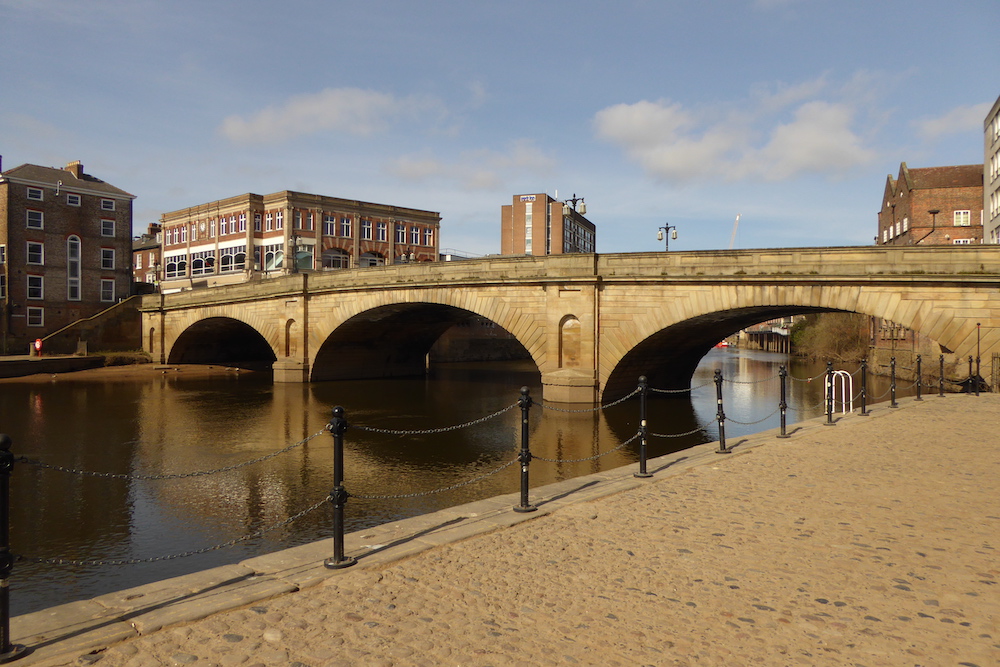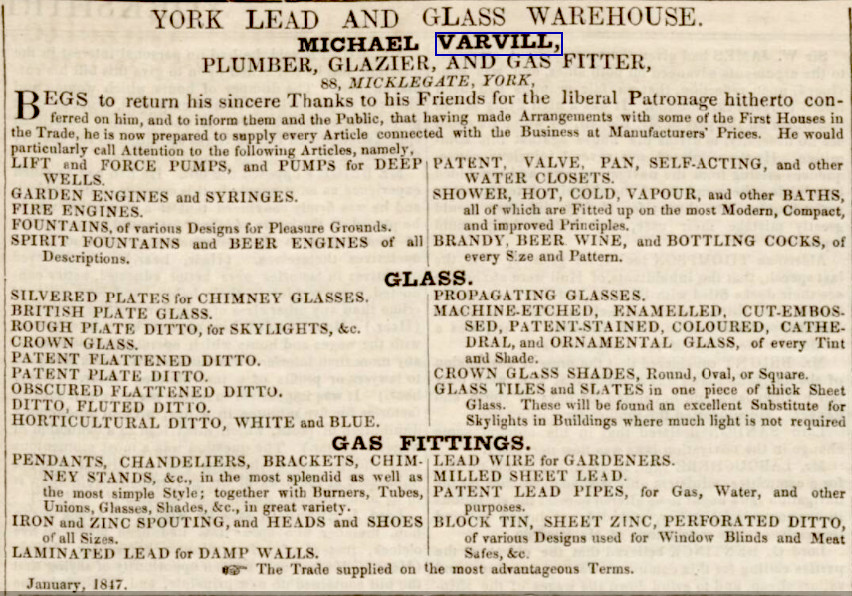Photographs by the author. You may use these images without prior permission for any scholarly or educational purpose as long as you (1) credit the photographer and (2) link your document to this URL, or cite it in a print one. [Click on the images to enlarge them.]


Left: Varvil's Warehouse (the only face visible). Right: Seen from across the water.
Varvil's Warehouse, Queen’s Staith, York. Architects: J. B and W. Atkinson. 1849. Varvill’s Warehouse, which is Grade II listed, is the building with the five parallel windows in the upper floor. It is tall and narrow, hemmed in by similar buildings now all converted to residential use. It has a rusticated basement in stone, as do many of the older riverside warehouses along this stretch of the Ouse; stone was presumably thought stronger than brick to survive periodic flooding (see the penultimate photograph here). Most of the structure is in brick; it is a functional, plebeian façade, without the cornice which might be used on domestic housing or on properties used by gentry, such as a bank.
Environs I: Nearby Victorian Warehouses


Left: Bonding Warehouse, Right: Wood’s Mill.
Context: Queen’s Staith is the name of the short riverside road in front of Varvill’s Warehouse. Since medieval times there had been a bridge to the north, Ouse Bridge, that limited sea-going vessels to wharves downstream of it. Behind the warehouse and parallel to the river runs the street called Skeldergate. Further Victorian warehouses to the south between that road and the Ouse are the Bonding Warehouse and Wood’s Mill (see Pevsner and Neave 232 and 230). Skeldergate Bridge was not built till 1878-80.
Environs II: Varvil's and the Ouse


Left: Varvil's Warehouse seen straight from the opposite bank. Right: Ouse Bridge by Peter Atkinson junior.
To the north of the block of warehouses containing Varvil’s is the Ouse Bridge of 1810-20 which was built on the site of the 12th and 16th-century bridges, it was the only bridging point in York at this time. Its architect was Peter Atkinson junior, the father of the Atkinson brothers (Pevsner and Neave, 203).

The Ouse in flood.
Varvil's Past

Robert Varvil's advertisement in
the Yorkshire Gazette oof 1847.
According to the heritage listing, Varvil’s warehouse was built for Robert Varvil or Varvill. He may have been the son of the ‘Mr Varvill’ for whom the houses nearby at nos. 39 and 41 Micklegate had been built by the Atkinsons c. 1835. A Michael Varvill seems to have left the most record, in the 1840s he had a business as a plane-maker and plumber based in the area of Micklegate and Bridge Street (advert, 1847). He had sons called Summers and Robert; he was a commissioner and on the Electoral Roll; in 1836 he was derided in the Yorkshire Gazette for attending a meeting that demanded an end to corruption in local government. Robert Varvill had other premises in Bridge Street, but his business is uncertain. In the 1871 census, Hannah Varvill and a housekeeper were living in Micklegate near the post office. In the 1885 directory, 195, Mrs Robert Varvill and John Varvill were living in Newington Place, near the Knavesmire.
Bibliography
Advert. Yorkshire Gazette. 13 February 1847: 4.
Pevsner, Nikolaus, and David Neave. Yorkshire: York and the East Riding. New Haven and London: Yale University Press, 2002.
Protest meeting. Yorkshire Gazette 9 April 1836: 3.
Varvils Warehouse, Queens Staith, York. Historic England. Web. 24 April 2021.
Created 24 April 2021